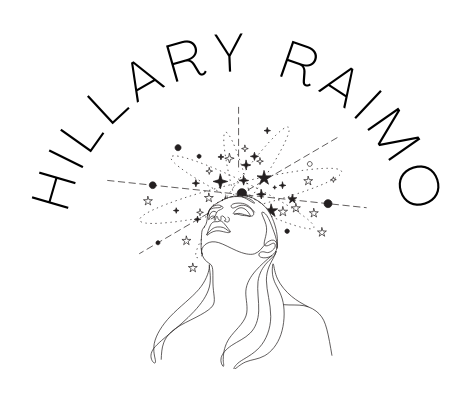Dr. Michael Gordin had said something interesting in an essay on pseudoscience. He argued that people often think about the divide between pseudoscience and real science incorrectly. The former has become much more insane and pervasive than ever before in recent times. This has happened despite all the scientific literacy and advancements in technology prevalent today.
Many scientists have described the pseudo-scientific ideas as clearly mistaken. However, people still want to know more about them. We can get a better understanding of pseudosciences by looking at how they relate to real science. It would help us understand what they are and how we can deal with them.
The scientific and the unscientific
Many great minds have tried to distinguish between the scientific and the unscientific over the years. The outcome of their efforts have been mixed all this while. So, the question of what is scientific and unscientific has been described as the ‘demarcation problem’ in philosophy.
According to the philosopher Karl Popper, a hypothesis must be falsifiable to be considered scientific. For instance, Einstein’s theory of relativity makes clear predictions. It can be subject to tests and this makes it scientific. According to Popper, there are some unscientific theories like Freudian psychoanalysis, which are unfalsifiable.
Sometimes, it is quite difficult to say which idea is falsified by an experiment. There’s this idea about Bigfoot, which is falsifiable technically. Very few would think about searching for Bigfoot as most of them won’t consider it a worthwhile endeavor.
Thomas Kuhn’s paradigm shift
Thomas Kuhn’s concept of paradigm shift was once quite popular. This concept still finds references in a few circles. He places the line between science and non-science in terms of paradigms. Ideas that are in alignment with paradigms can be considered as science. Those ideas that do not align with paradigms are something else.
When problems with the dominant paradigm are too large to ignore, there’s a revolution. A new paradigm acquires prominence. Kuhn noted that experts in certain pseudosciences such as medieval medicine and astrology were not conducting any research. They were, therefore, not practicing science in any way.
Some scientific aspects can be explained by the idea of paradigms as the demarcation lines. Despite this, it fails to explain the occurrence of the shifts to new ideas to a great extent. While it can be used to describe pseudoscience, it is somewhat relativistic.
Dr. Gordin’s identification of different sciences
According to Dr. Michael Gordin, pseudoscience is the shadow of science. A shadow exists because of the object casting it. Dr. Gordin also goes on to suggest that science has more than one shadow. The tendencies of the shadows allow scientists to categorize them. So, there are groups that cover several topics of pseudoscience.
Each of these groups are motivated by varying factors and has different ideas. One needs to deal with such ideas in different ways. He first identifies the vestigial sciences as systems of thought that were considered sciences earlier. Today, the professional scientists have gradually moved away from these sciences or actively excluded them.
One of the most well-known among such sciences are alchemy and astrology. During the Renaissance period, they were largely synonymous with what is known today as chemistry and astronomy. There was a time when pseudosciences like alchemy and astrology were considered true sciences. Some of these pseudosciences still have a large number of supporters.
Different types of fringes according to Dr. Gordin
1. Ideological fringes
They’re usually ideas that serve a political ideology by distorting rational thinking. Among the famous examples were the Nazi Deutsche Physik and Stalinist Michurinism. Today, we can see such ideological fringes being used against climate science.
2. Controversy fringe
This includes works published within the bounds of a science that are potentially pathbreaking. They’re greeted with intense skepticism and debates that can be seen in professional journals. Some of these works do find acceptance, just like quantum mechanics was accepted a century ago.
3. Mentalist fringe
Dr. Gordin defines mentalist fringe as focusing on powers of the mind that are either under-appreciated or unrecognized. Mentalist fringe groups include a wide range of pseudosciences, ranging from extrasensory perception (ESP) to spiritualism. This group interestingly overlaps with the vestigial sciences, as such ideas were once considered pure sciences.
How pseudoscience must be approached
Pseudosciences mostly change with time. One can never get rid of them as anything that has a center has a fringe. Science is not different in this regard. Each category critiques mainstream science, according to Dr. Gordin. There are a few points that are raised consistently by pseudoscientists. One of them is an impression that science resists engagement with those who believe in pseudosciences.
There are many who might know about the scientific works, but not how they’re done. It would be great if those aspects of science could be demystified. The neutral parties must be educated more about the daily practices of science. A point of collaboration must be offered between different types of sciences.
Many fields of pseudoscience would seem rather absurd to many. However, they have journals with a form of peer review. Today, it is possible to obtain a certification in alternative sciences that are not of much use. All ancient religions have the mention of improbable planetary events between the planets such as Earth, Venus, and Jupiter.
An entire subculture once existed around such ideas. The claims made by such groups would make much more sense in a certain scenario. An example would be when people from science’s fringes are doing the same thing as people in the center.
The way forward
Dr. Gordin suggests that belittling the advocates of pseudosciences is a bad idea. The ideas that drive people to the fringes of science must be addressed instead. A better way to deal with this would be helping the pseudoscience advocates trust science.
They must not be made to feel as if it is just a hierarchy devoid of merits. When there was a rise in modern science across the world, pseudoscience was also around because of its advocates. Even today, there are many people who hold pseudo-scientific beliefs.
So, it is likely that it will continue to endure in some form or the other. The best way forward would be to protect the society from dangerous applications of pseudosciences. One must know how to talk to people with such beliefs and suggest alternatives that they can adopt.


